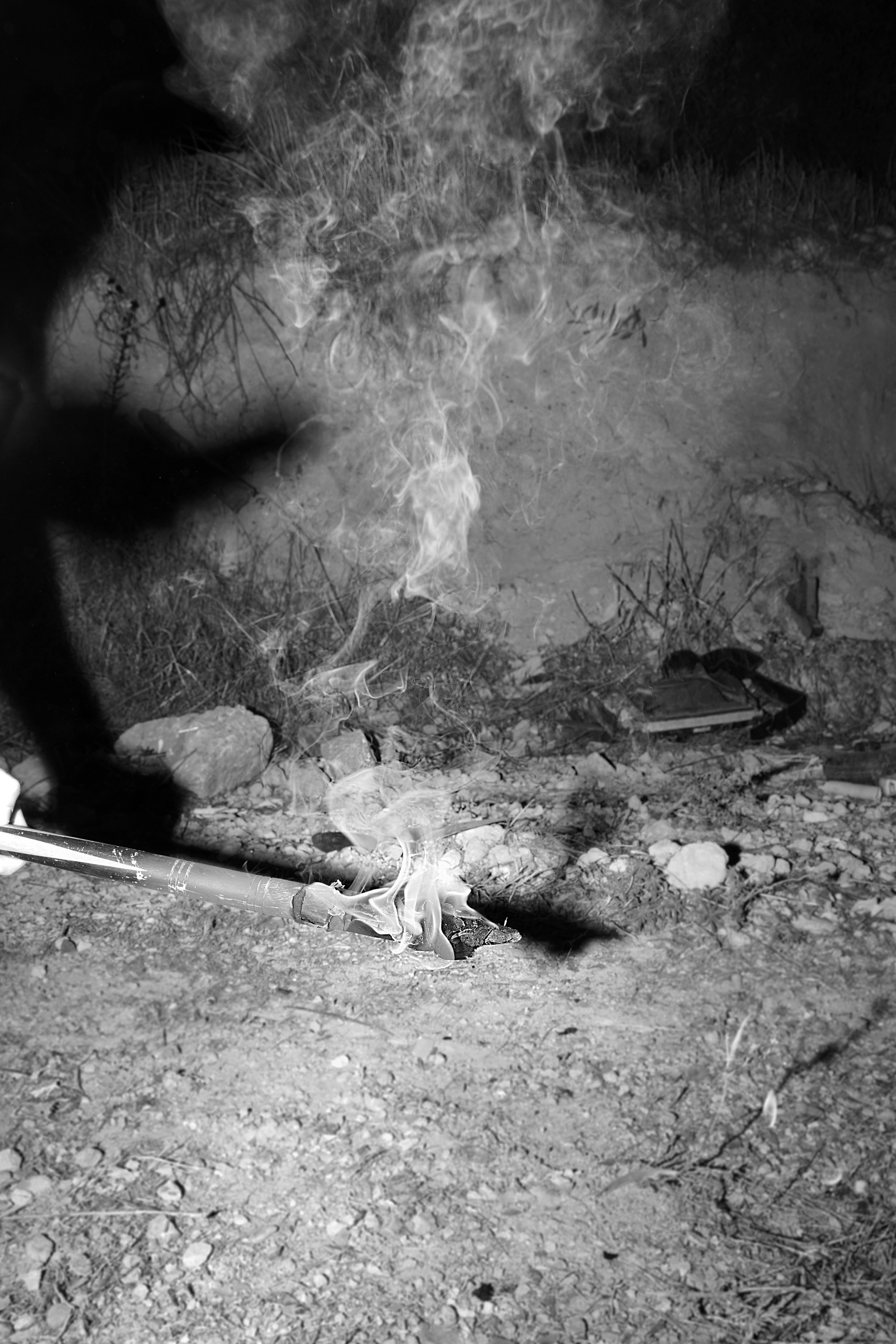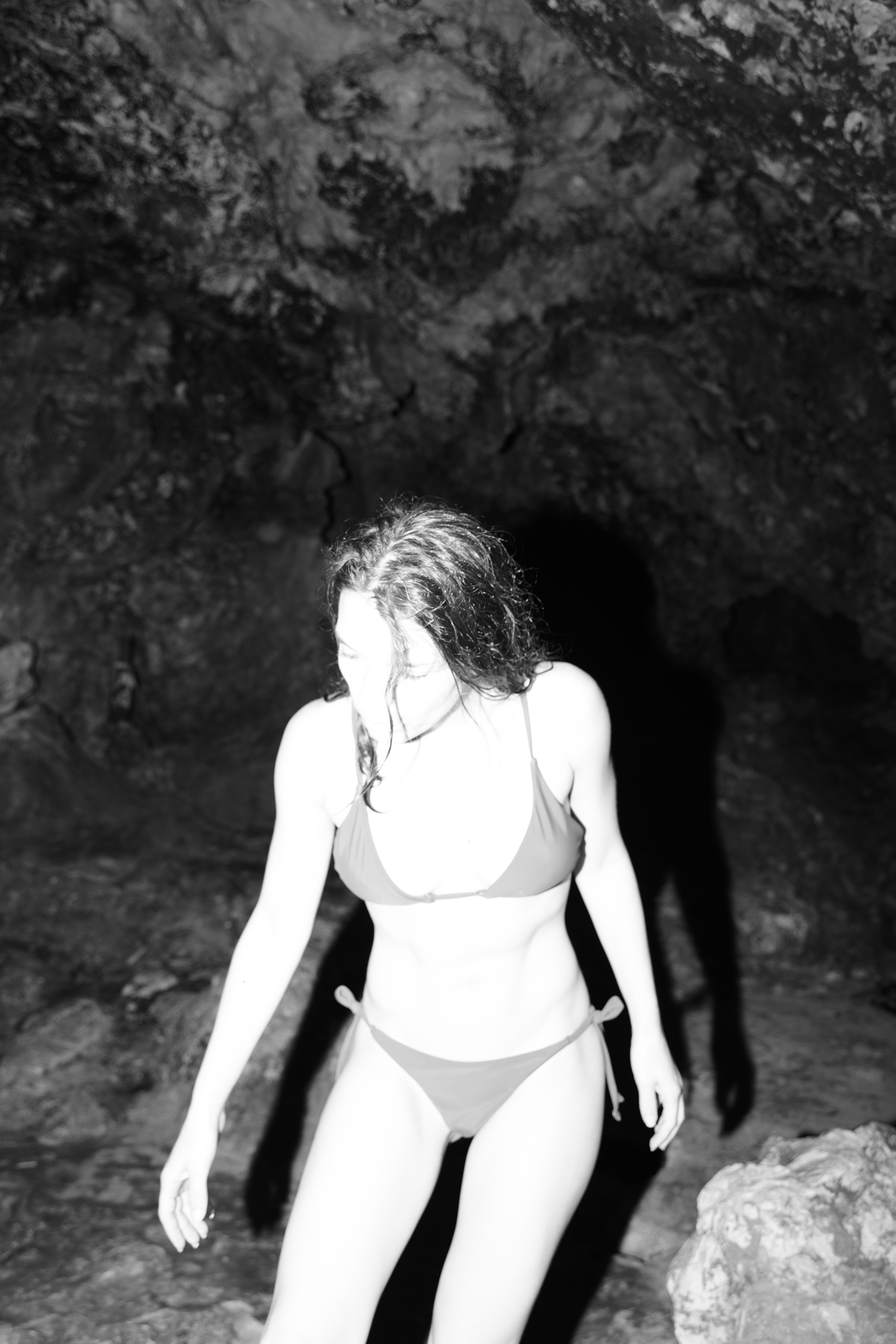IN CONVERSATION WITH:
KLAVDIA BALAMPANIDOU
KLAVDIA BALAMPANIDOU
(14.10.21)





In Conversation with Sophie Spence
Sophie Spence: Your images are full of portals, what brings you to these places?
SS: I love your series ‘They Sing a Song Only You Can Hear’, and the idea that you’re looking at the in-between of one relationship and a new life - and you find this kind of void, what draws you to focus on this?
SS: You use black and white photography really dynamically, what draws you to this aesthetic?
SS: Was the series shot at a particular location that holds meaning? The images feel like they’re in constant transition, every location being a place of movement.
SS: I see a kind of surrealist rebirth in these images, how do you explore these ideas of birth and vulnerability in your work?
SS: Thinking about your use of a personal archive for your series ‘Birthplace & Birthname’, what was the process of sifting through personal histories like for you? How did you choose which narratives to follow?
︎
Klavdia Balampanidou (b.1991)
Based in Nicosia, Cyprus.
To see more work by Klavdia Balampanidou, visit - Website / Instagram
︎
Klavdia Balampanidou: Yes, indeed. Portals are a symbol of transition, a gateway between one world and another - or between past and future. During the ‘making-off’ of the series, I knew that I was entering into a new period of my life. I was thinking a lot about the concept of transformation and I was attracted by gates, gaps, holes and broken things.
SS: I love your series ‘They Sing a Song Only You Can Hear’, and the idea that you’re looking at the in-between of one relationship and a new life - and you find this kind of void, what draws you to focus on this?
KB: The project started 3 years ago and it was after the ending of a long-term relationship. I wanted to express myself and the only way that I knew how to do it was through my camera or writing. I wrote down hard and clear about what was hurting me until one day, writing couldn’t fulfil my needs. Then, I started filming myself. When I was ready, I set my tripod and started doing self-portraits and the next step was to expand this by including participants.
The people in the series are the ones that are looking to be heard and found. They are seeking to be loved again too, but first they have to regain intimacy with themselves. I wanted to capture them during this process - when someone has to leave behind their old life and feels lost and weak as they enter into a new and unknown phase, or into this kind of void as you said. It's like a lake that you have to enter in order to heal your wounds, prepare yourself for the new and move on with your life. An extremely cathartic experience.
SS: You use black and white photography really dynamically, what draws you to this aesthetic?
KB: It was a time of my life that I couldn’t see and I didn’t care about colours. I could only see in black and white. All I wanted was to capture the void and the tension that I had in me and turn it into a dream-like series.
SS: Was the series shot at a particular location that holds meaning? The images feel like they’re in constant transition, every location being a place of movement.
KB: Your question puts it perfectly. All these empty rooms/places, the sea caves, the locations in the woods are safe places for transformation, or at least I like to think of them as safe places.
I started taking pictures of myself, in order to be in tune with my emotions and be able to externalise what I had inside me. The first picture (which is not part of the series anymore) was a portrait of myself in the bathtub, you know, a safe place where you can just be with yourself and have some moments of solitude. After that, I was seeking to find a new location to feel relieved and safe, and I found it in nature. I strongly believe that we can forget about our problems and experience a feeling of belonging when we are in nature and this makes sense, as we are part of it, we are part of the mystery.
SS: I see a kind of surrealist rebirth in these images, how do you explore these ideas of birth and vulnerability in your work?
KB: I get what you are saying about the surrealist rebirth and you are right. I was aiming to create a visual narrative that was based on my dreams. I like to mix them up, both dreams and reality, and create a new visual world. After all, dreams are unexpected reflections of reality.
I also love human vulnerability! I always have in my mind a quote by Andrei Tarkovsky that says, “Let them be helpless like children, because weakness is a great thing, and strength is nothing. When a man is just born, he is weak and flexible. When he dies, he is hard and insensitive. When a tree is growing, it's tender and pliant. But when it's dry and hard, it dies. Hardness and strength are death's companions. Pliancy and weakness are expressions of the freshness of being. Because what has hardened will never win”.
SS: Thinking about your use of a personal archive for your series ‘Birthplace & Birthname’, what was the process of sifting through personal histories like for you? How did you choose which narratives to follow?
KB: For many years I avoided dealing with my personal identity, my roots, my nationality and the reason for that was probably my fear of recognising that I was different from the other members of the Cypriot community - where I grew up. I was born in Georgia, grew up in Cyprus and my nationality is Greek. I was kind of confused about my cultural identity and my heritage. So in order to embrace my identity I decided to take it from the beginning, from my birth place and my given name and to examine how a place and a name can determine your personal identity. After two visits to the village that I was born in during a period of two years, as well as months of working on my personal archive, I made a photo-book that included both these series.
︎
Klavdia Balampanidou (b.1991)
Based in Nicosia, Cyprus.
To see more work by Klavdia Balampanidou, visit - Website / Instagram
︎